LESSON 37 ARHAT PART II Ariya puggala 22 09 2010 FREE ONLINE eNālandā Research and Practice UNIVERSITY
If a man’s mind becomes pure, his surroundings will also become pure. To be idle is a short road to death and to be diligent is a way of life; foolish people are idle, wise people are diligent. - Buddha
EDUCATE (BUDDHA)! MEDITATE (DHAMMA)! ORGANISE (SANGHA)!
WISDOM IS POWER
Awakened One Shows the Path to Attain Ultimate Bliss
Anyone Can Attain Ultimate Bliss Just Visit:
COMPUTER IS AN ENTERTAINMENT INSTRUMENT!
INTERNET!
IS
ENTERTAINMENT NET!
TO BE MOST APPROPRIATE!
Using such an instrument
The Free e-Nālandā Research and Practice University has been re-organized to function through the following Schools of Learning :
Buddha’s Sangha Practiced His Dhamma Free of cost, hence the Free- e-Nālandā Research and Practice University follows suit
As the Original Nālandā University did not offer any Degree, so also the Free e-Nālandā Research and Practice University.
The teachings of Buddha are eternal, but even then Buddha did not proclaim them to be infallible. The religion of Buddha has the capacity to change according to times, a quality which no other religion can claim to have…Now what is the basis of Buddhism? If you study carefully, you will see that Buddhism is based on reason. There is an element of flexibility inherent in it, which is not found in any other religion.
§ Bhimrao Ramji Ambedkar , Indian scholar, philosopher and architect of Constitution of India, in his writing and speeches
I.
KAMMA
REBIRTH
AWAKEN-NESS
BUDDHA
THUS COME ONE
DHAMMA
II.
ARHAT
FOUR HOLY TRUTHS
EIGHTFOLD PATH
TWELVEFOLD CONDITIONED ARISING
BODHISATTVA
PARAMITA
SIX PARAMITAS
III.
SIX SPIRITUAL POWERS
SIX PATHS OF REBIRTH
TEN DHARMA REALMS
FIVE SKANDHAS
EIGHTEEN REALMS
FIVE MORAL PRECEPTS
IV.
MEDITATION
MINDFULNESS
FOUR APPLICATIONS OF MINDFULNESS
LOTUS POSTURE
SAMADHI
CHAN SCHOOL
FOUR JHANAS
FOUR FORMLESS REALMS
V.
FIVE TYPES OF BUDDHIST STUDY AND PRACTICE
MAHAYANA AND HINAYANA COMPARED
PURE LAND
BUDDHA RECITATION
EIGHT CONSCIOUSNESSES
ONE HUNDRED DHARMAS
EMPTINESS
VI.
DEMON
LINEAGE
with
Level I: Introduction to Buddhism
Level II: Buddhist Studies
TO ATTAIN
Level III: Stream-Enterer
Level IV: Once - Returner
Level V: Non-Returner
Level VI: Arhat
Jambudvipa, i.e, PraBuddha Bharath scientific thought in
mathematics,
astronomy,
alchemy,
and
anatomy
Philosophy and Comparative Religions;
Historical Studies;
International Relations and Peace Studies;
Business Management in relation to Public Policy and Development Studies;
Languages and Literature;
and Ecology and Environmental Studies
Welcome to the Free Online e-Nālandā Research and Practice University
Course Programs:
AWAKENING THE BUDDHA IN US
http://www.palikanon.com/english/pali_names/ay/arahat.htm
ariya-puggala. asekha, Suddhodana, Khemā, Mahā Arittha, Visuddhimagga, Milindapañha, Yasa, Bimbisāra, Suddhodana, Mahāvamsa, Mahā Arittha, Mahā Arittha, Kathavatthu, Milinda, Subha Sutra, Nagasena, Suddhāvāsā, anāgāmī,Mahapajapati Gotami,Therīgāthā,Somā,Theragāthā, Mahamangala Sutta, Sutta Nipata, Sutta Nipata, Itivuttaka, Theravadins, Sabbatthivadins, Mahasanghikas, Andhakas
Arahat, Arahant
http://www.dhammawiki.com/index.php?title=Ariya-puggala
Ariya-puggala
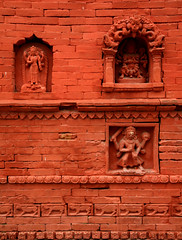
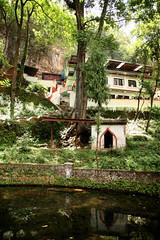

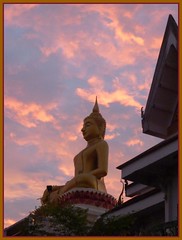





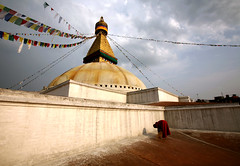



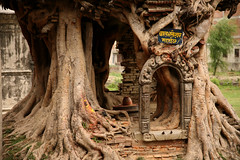
From The Dhamma Encyclopedia
Ariya-puggala Noble Ones, noble persons: The 8, Ariya = Noble Ones are those who have realized one of the 8 stages of Nobility, i.e. the 4 supra-mundane paths magga and the 4 supra-mundane fruitions phala of these paths. There are thus these 4 pairs:
A1. The one realizing the path of Stream-winning sotāpatti-magga. A2. The one realizing the fruition of Stream-winning sotāpatti-phala.
A3. The one realizing the path of Once-return sakadāgāmi-magga. A4. The one realizing the fruition of Once-return sakadāgāmi-phala.
A5. The one realizing the path of Non-return anāgāmi-magga. A6. The one realizing the fruition of Non-return anāgāmi-phala.
A7. The one realizing the path of Nobility arahatta-magga. A8. The one realizing the fruition of Nobility arahatta-phala.
Summed up, there are 4 noble individuals ariya-puggala:
1. The Stream-winner Sotapanna,
2. The Once-Returner Sakadagami,
3. The Non-Returner Anagami,
4. The Worthy One Arahant.
In A. VIII,10 and A. IX, 16 the gotrabhū is listed as the 9th noble individual.
According to the Abhidhamma, the supra-mundane path, or simply path magga, is a designation of the moment of entering into one of these 4 stages of Nobility with Nibbana being the object, produced by intuitional insight vipassana into the impermanence, misery and impersonality of existence, flashing forth and forever transforming one’s life and nature. By fruition phala is meant those moments of consciousness which follow immediately thereafter as the result of the path, and which in certain circumstances may repeat for innumerable times during the life-time.
I: Through the path of Stream-winning sotāpatti-magga one becomes free whereas in realizing the fruition, one is freed from the first 3 mental chains samyojana, which bind beings to existence in the sense-sphere, to wit:
1: Personality-belief sakkāya-ditthi, see. ditthi, 2: Skeptical doubt vicikicchā, 3: Clinging upādāna to mere rules and rituals sīlabbata-parāmāsa. One has maximally 7 rebirth rounds before Awakening and cannot be reborn as animal, ghost, demon or hell-being.
II: Through the path of Once-return sakadāgāmi-magga one becomes nearly freed from the 4th and 5th mental chains, to wit:
4: Sense-desire kāma-cchanda = kāma-rāga rāga, and 5: Ill-will vyāpāda = dosa see: mūla.
III: Through the path of Non-return anāgāmi-magga one becomes fully freed from the above-mentioned 5 lower mental chains.
IV: Through the path of Nobility arahatta-magga one furthermore becomes free from the 5 higher mental chains, to wit:
6: Craving for fine material existence rūpa-rāga, 7: Craving for formless existence. arūpa-rāga, 8: Conceit and pride māna, 9: Restlessness uddhacca, and 10: Ignorance avijjā.
The stereotype Sutta text runs as follows:
Stream-enterer:
I: After the disappearance of the three mental chains, the Bhikkhu has won the stream to Nibbāna and is no more subject to rebirth in the lower worlds, is firmly established, bound for full enlightenment.
Once-returner:
II: After the disappearance of the three mental chains and the reduction of greed, hatred and confusion, he will return only once more; and having once more returned to this world, he will put an end to suffering.
Non-returner:
III: After the disappearance of the five mental chains he appears in a higher world, and there he reaches Nibbāna without ever returning from that world to the sense-sphere worlds.
Arahant:
IV: Through the ceasing of all mental fermentations āsava-kkhaya he reaches already in this very life the deliverance of mind, the deliverance through understanding, which is free from fermentations, and which he himself has understood and directly realized.
For the various classes of Stream-winners and Non-Returners, see: Sotāpanna, Anāgāmī.
B: The sevenfold grouping of the Noble Disciples is as follows:
1: The faith-devotee saddhānusārī, 2: The faith-liberated one saddhā-vimutta, 3: The body-witness kāya-sakkhī, 4: The both-ways-liberated one ubhato-bhāga-vimutta, 5: The Dhamma-devotee dhammānusārī, 6: The vision-attainer ditthippatta, 7: The one liberated by understanding paññā-vimutta.
This group of seven Noble Disciples is thus explained in Vis.M XXI, 73:
1-2: He who is filled with determination adhimokkha and, in considering the constructions as impermanent anicca, gains the ability of faith, he, at the moment of the path to Stream-winning A1 is called a faith-devotee saddhānusārī; 2: at the seven higher stages A2-A8 he is called a faith-liberated one saddhā-vimutta.
3: He who is filled with tranquillity and, in considering the constructions as miserable dukkha, gains the ability of concentration, he in every respect is considered as a body-witness kāya-sakkhī.
4: He who after reaching the absorptions of the formless sphere has attained the highest fruition of Nobility, he is a both-ways-liberated one ubhato-bhāga-vimutta.
5: He who is filled with understanding and, in considering the constructions as no-self anattā, gains the ability of understanding, he is at the moment of Stream-winning A1 a Dhamma-devotee dhammānusārī,
6: At the later stages A2-A7 a vision-attainer ditthippatta,
7: At the highest stage A8 a understanding-liberated one paññā-vimutta.